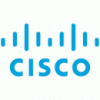A jump in cyber attacks and the need to increase network security during mandatory working from home has presented a number of challenges for businesses, with technology stepping in to protect.


A jump in cyber attacks and the need to increase network security during mandatory working from home has presented a number of challenges for businesses, with technology stepping in to protect.
When we think security, domineering guards in black probably spring to mind.
So it’s easy to forget the threats that lie beyond our physical world - even though these online “villains” can be just as, or in some cases, even more menacing than the typical balaclava-clad criminal.
For these virtual attackers, malware and phishing emails are their weapons of choice: during one week in April, Google recorded 18 million malware and phishing emails related to COVID-19.
Out on the cyber battlefield this ammunition enables cybercriminals to defraud by disguising themselves as legitimate companies, tricking users into downloading malicious files on their computers (or work computers) or unknowingly disclosing private information - which is then used for an easy ‘break-in’, giving hackers the scale to potentially go after hundreds of users.
This is problematic for many reasons - for one, these cybercriminals can easily sneak past the security in black standing at your office door.
But sometimes you’ve just got to fight fire with fire and for multinational Cisco, its technology army was ready to defend well before COVID-19 hit.
“All of a sudden everyone had to work from home but nobody really had the security perimeter provisions in place,” Cisco ANZ director of cyber security Steve Moros said.
“With everyone working from home and connecting without that perimeter, that poses a huge security risk when you consider 81 per cent of breaches come from compromised credentials - it’s the weakest link.”
Rallying the troop of Cisco tools
Mr Moros said the main issue was enabling connection to confidential servers by needing to trust non-corporate devices, with much of the workforce now using personal devices.
“Our customers were asking for the ability to deploy (working from home systems) within two weeks or less,” he said.
“We had to enable secure working that was no longer at the perimeter - 85 per cent of users weren’t going through the perimeter, but directly connecting to the internet.”
Mr Moros said the first step was providing Cisco Duo, a multi-factor authentication platform.
Since March, Mr Moros said more than 3,300 organisations had signed up for Cisco Duo globally nearly every week: a 200 per cent increase on the usual weekly sign up rates.
Mr Moros said Cisco AnyConnect, which the business was providing to customers for free, had also been deployed as an extra level of protection - a unified security endpoint agent that protects enterprise resources for remote access, web security features and roaming protection.
“The other challenge is there’s a lot of malware and phishing using covid-themed lures,” he said.
On Feb 19 Cisco’s enterprise customers made 562,144 enquiries to 8,080 unique domains containing key words ‘covid’ or ‘corona’ - by March 19 the company saw requests increase to 11.2 million across more than 47,000 domains containing these keywords.
Mr Moros said Cisco Umbrella, a cloud-native platform, was the best defence as more and more organisations embraced direct internet access during work from home, enabling extension of protection to roaming users and branch offices.
“Customers that don’t have these Cisco tools could be significantly compromised by these types of malicious sites,” he said.
“Cisco Security has added more than 9 million security users since March 10 and the number is growing exponentially every day.”
Mr Moros said a team effort was required to truly defeat cybercriminals.
“We need to drive people to practice sensible data hygiene; lock their screens and use trusted and secure wifi devices,” he said.
To find out more about how Cisco can help protect your business, visit









